Changing trends in the last 25 years in UPSC Prelims in Geography | Geography for UPSC CSE PDF Download
Indian Geography and UPSC Prelims
- Indian geography and geographical locations form the core areas from where UPSC generally asks questions in prelims.
- India and World Geography are important constituents for Civil Services Preliminary Examination. You may expect 12 to 18 questions from this part. Below, we discuss the previous year's questions and update the content to reflect trends up to 2026.
- It is critical to review the pattern of previous year's exams before entering the minefield of UPSC Preliminary examination. This will not only assist aspirants in cutting their preparation to the bone for optimum results, but it will also assist them in developing a well-informed and balanced preparation approach.
With this document, we present an in-depth study of the pattern, particularly in the Prelims Papers Geography portion, updated for 2026.
Questions Asked in UPSC Geography Section (1981–2010)
- The maximum angle of incidence of sun’s rays on the North Pole occurs when the sun’s rays are vertically incident on the _____?
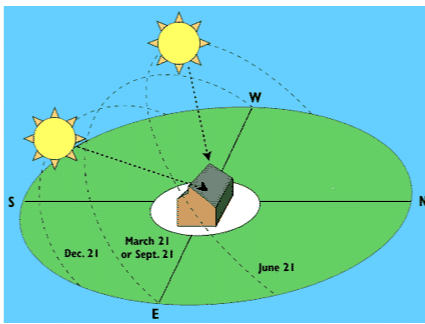
- The Westerlies bring more rain than the Trade Winds because _____?
- Name the crops which require the given conditions: Average 25°C temperature throughout the growing period, over 100 cm of rain, alluvial soil with sub-soil layer of clay?
- The river which flows between Vindhyas and Satpuras is _____?
- Does Duncan passage lie between _____?
- Which is the second largest linguistic unit in India?
- Western Rajasthan receives scanty rainfall because _____?
- What is ‘reserved forest’?
- The soil of India’s eastern and western coast is _____?
- Of the total water of the earth, fresh water reserves constitute approximately _____?
- Winter rain in North-Western India is caused by _____?
- Indian Standard Time is based on _____?
- The solar radiation reflected back from the top of the atmosphere is equal to _____?
- What is Roaring forties?
- Which planet takes the longest time to rotate upon its axis?
- Which tribal group has the largest population in India?
- Under coastal erosion, vast strips of land are turned into _____?
- Barkhans are the landforms of, the canal project in Rajasthan is concerned with which river _____?
- When it is half-moon, the angle between sun and moon as observed from the earth is _____?
- The brightest star in the sky is _____?
- Neap tides are caused as a result of _____?
- Winter rains in Kashmir are due to _____?
- Does the Mississippi River fall into _____?
Questions Asked in UPSC Prelims 1992
- The maximum amount of area under dry farming is in which state?
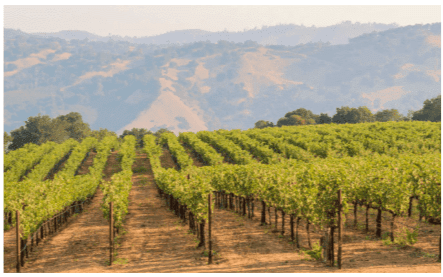 Dry Farming
Dry Farming - Edible oil is imported from which of the following countries at present _____?
- The leading producers of silk in the world are _____?
- Where is Nandana Wildlife sanctuary?
- Is fertile soil suitable for growing common crops is likely to have a pH value of _____?
- The production of cultured pearls is an important cottage industry of _____?
- The only land-locked country in South-east Asia is _____?
- The Neyveli thermal power plant is fed by _____?
- From 1991-2010, we see Map questions also. Maps are given with some spots, and you have to identify the places. You should know the correct geographical position of different countries.
Questions Asked in UPSC Prelims (1993–2010)
- ‘The length of its day and the tilt of its axis are almost identical to those of the earth’. What is 'it' here?
- The shortest air-route from Perth to London is _____?
- The Himalayas are formed of parallel fold ranges of which the oldest range is _____?
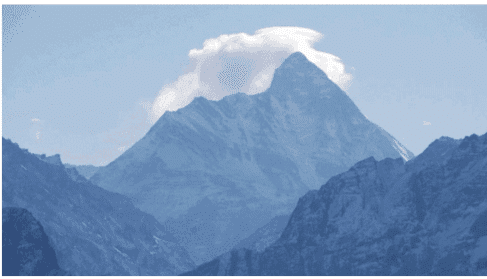
- Which type of erosion is responsible for the formation of Chambal Ravines?
It is suggested to read Physical Geography of India to have an in-depth understanding for the Geography section of UPSC Prelims.
Some of the questions in UPSC Prelims were based on maps:
One has to locate the thermal power stations, the non-cereal crop production areas, tidal ports, countries of erstwhile the Soviet Union, etc.
- High temperature and low pressure over the Indian Sub-Continent during the summer season draws air from the Indian Ocean leading to the in-blowing of the ‘Southwest Monsoon’.
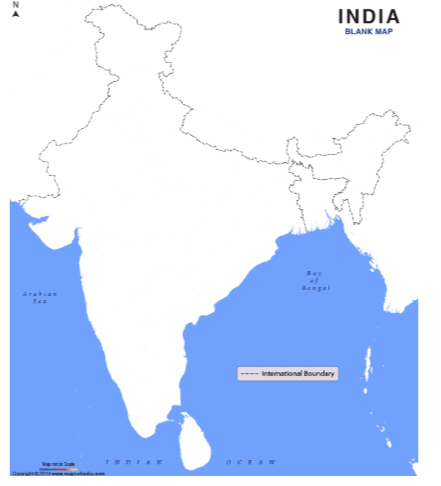
- The highest peak of Andaman and Nicobar islands is located in _____?
- Locate Syria, Iraq, Jordan, and Saudi Arabia on a given map.
- The Palk Bay lies between, Diamond ring is a phenomenon observed at _____?
- “From Aceh in the far north-west to Torres Strait in the east is 5000 miles, almost as far as from London to Baghdad. The archipelago has 14,000 islands, some mere equatorial rocks, others some of the largest in the world.” This description best fits which country?
- Which of the following places are known for the paper manufacturing industry?
- The tribal population in Andaman and Nicobar Islands belongs to the _____?
- The group of small pieces of rock revolving around the sun between the orbits of Mars and Jupiter are called _____?
- If the earth's direction of rotation is reversed, what would be the IST when it is noon at the International Date Line?
- Which one of the following stars is nearest to the Earth?
- Daily weather map showing isobars is an example of _____?
- Which one of the following countries is the largest producer of fuelwood in the world?
- The January isotherm taken as a basis for dividing India into tropical and subtropical zones is _____?
- The Alamatti dam is on the river _____?
- Which factor is responsible for the change in the regular direction of the ocean currents in the Indian Ocean?
Questions Asked in UPSC Prelims (2009–2010)
- Generally, questions are asked from Physical Geography (8-10 questions), which include sub-topics such as Solar Eclipse, Lunar Eclipse, the Monsoons, the Planetary winds, Longitude and Latitude, etc. (You must have a clear understanding of various geographical phenomena).
- Economic Geography (5-8 questions, greater emphasis should be placed on the Economic Geography of India), which includes topics such as agriculture, animal husbandry, fisheries, rural development, irrigation, transport, communication, and tourism, etc., and Physiography of India (5 to 7 questions).
- Before going through the chapter, read the NCERT books of class Xth and XIIth for the subject's basic knowledge. A cramming habit is necessary for the preparation of this part.
Questions Asked in UPSC Prelims 2011
- On orchids, cereals, flowers, fruits, plants, and their producing state, methods of conservation of fauna, on the river system, Demographic dividend, Indian animals and their natural habitats, on La Nina and El Nino.
- On mangroves as a safety hedge, on salination of the irrigated land, difference between asteroids and comets, on Westerlies.
- On Malacca straits, on biodiversity region of the world, ecosystem, productivity, on rain forest and tropical deciduous forest, on the Himalayan range and its species, on crop and climatic region, Reason for the formation of African and Eurasian desert, Brahmaputra takes U-turn and flows into India...why?
Questions Asked in UPSC Prelims 2012
- On the characteristics of Tropical Savanna Regions, Categories of protected areas and their rules and regulations.
- About Millennium Ecosystem Assessment, on endangered species, Difference between the antelope's Oryx and Chiru, Animals found in India.
- On carbon sequestration/storage in the soil, Plant 'Sea buckthorn and its importance'.
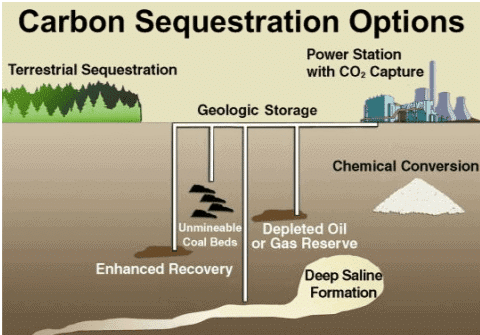
- On pulse, fodder, and green manure.
- On wetlands of India, rainfed crops, evidence of Himalaya being folded mountain, temperature decreases with the increase from earth surface because of.... etc.
Questions Asked in UPSC Prelims 2013
- There was a matching question on Geographical features and the regions, Different species found in India, sugar industry and its by-products, Variation in the season of the length of daytime and nighttime from season to season is due to, the Narmada flows to the west and other peninsular river flow to the east .... why?
- Other than ice caps and glaciers, remaining freshwater is found from, Matching question on Bio-sphere reserves, Lake and National Parks, on factors bringing dynamic changes on the surface of the earth. In the grasslands, trees do not replace the grasses as a part of ecological succession, because, Decreasing productivity of ocean, lakes, grasslands, and mangroves in practical sense, contour bunding method of soil conservation.
- On National parks and rivers flowing through them, Lion-tailed macaque found in its natural habitat.
- The most important fishing grounds of the world are found in the regions where_______.
- On characteristics of equatorial forests, the annual range of temperature in the interiors is high compared to the coastal areas ..... why?
- On characteristics of Indian coal, characteristics of laterite soil, Minerals, and gas and where they are found, on Kharif crops, Region and its characteristics, Tribes and the states they belong to, on endangered fauna, etc.
Questions Asked in UPSC Prelims 2014
- What are the significances of a practical approach to sugarcane production known as 'Sustainable Sugarcane Initiative'?, If a wetland of international importance is brought under 'Montreux Record'.
- What does it imply?
- Which is separated by 'Ten Degree Channel'?
- On Tiger Reserves, Wildlife Sanctuaries, and Peaks and States related to it.
- Which country of south-west Asia does not open out to the Mediterranean sea?
- In India, in which one of the following types of forests is teak a dominant tree species?
- On characteristic of different types of rain.
- The best description of the term ecosystem.
- Which National Park is unique in being a swamp with floating vegetation that supports a rich biodiversity?
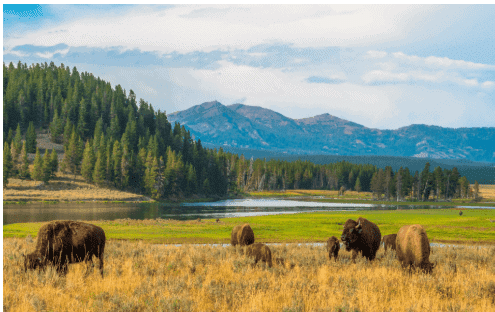
- Which can be the impact of excessive/inappropriate use of nitrogenous fertilizers in agriculture?
- What explains the eastward flows of the equatorial counter-current?
- On places of pilgrimage and location, On marine species, On Golan Heights, which region in India has a combination of mangrove forest, evergreen forest, and deciduous forest. On Goldilocks Zone, etc.
Questions Asked in UPSC Prelims 2015
- Which national park has a climate that varies from tropical to subtropical, temperate, and the Arctic?
- In India, the steel production industry requires the import of _____?
- Living Root Bridges are found in _____?
- Tides occur in the oceans and seas due to _____?
- In which state do Tropical Evergreen Forests Occur?
Questions Asked in UPSC Prelims 2016
- On the tributaries of Brahmaputra, What is unique about Kharai Camel breed found in India?
- On Red Sander, a tree species found in a part of South India, on Shale gas resources found in India, Advantages of participating drip irrigation.
- On Community and the country like Kurd, Madhesi, and Rohingya (although current phenomenon).
- Which phenomenon adds carbon dioxide to earth, Naturally growing plants of the Himalayas, Important pollutants released by the steel industry in India, Ecologically important campaign/festival practiced by communities and tribes in India, about Champa community in India, Cluster bean (guar).
- On coral reefs and the places found, the problem of social erosion, a seasonal reversal of wind, Matching questions on Wetlands, National Park and Lake, and hill regions.
- Turkey is located between cities situated from South to North in Southeast Asia, Integrated Watershed Development Programmes, places in India which produce Areca nut, Mango, and Soya bean.
Questions Asked in UPSC Prelims 2017
- Mediterranean Sea is a border of which of the following countries—i.e., Jordan, Iraq, Lebanon, and Syria (it is Lebanon and Syria).
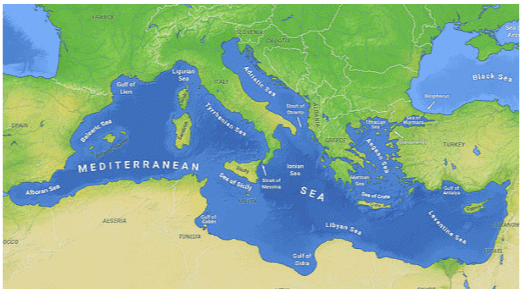
- On the Himalayas, the Western Ghats and Pulicat Lake spread over how many states in India.
- On natural habitat of gharials, Practices which help in water conservation in agriculture, Wild Life Protection Act 1972.
- Which country is geographically located near to Great Nicobar, On Teesta river, On Event Horizon, Singularity, String Theory, Standard Model (Actually these are observation and understanding of the earth).
- On Indian map—if you have to travel from Kohima to Kottayam, through how many states you have to travel?
- Which assumes importance in being a good link between the Eastern Ghats and the Western Ghats?
- On Geological Phenomenon of the Sea-shore in India, etc.
Questions Asked in UPSC Prelims 2022
- Which one of the lakes of West Africa has become dry and turned into a desert? i.e., Lake Victoria, Lake Faguibine, Lake Oguta, Lake Volta
- Gandikota canyon of South India was created by which one of the following rivers? i.e., Cauvery, Manjira, Pennar, Tungabhadra
- The term “Levant” often heard in the news roughly corresponds to which of the following regions? i.e., Region along the eastern Mediterranean shores, Region along North African shores stretching from Egypt to Morocco, Region along Persian Gulf and Horn of Africa, The entire coastal Mediterranean Sea of areas.
- Consider the following countries:
1. Azerbaijan
2. Kyrgyzstan
3. Tajikistan
4. Uzbekistan
5. Turkmenistan
Which of the above have borders with Afghanistan? i.e., (a) 1, 2 and 5 only (b) 1, 2, 3 and 4 only (c) 3, 4 and 5 only (d) 1, 2, 3, 4 and 5 - Consider the following States:
1. Andhra Pradesh
2. Kerala
3. Himachal Pradesh
4. Tripura
How many of the above are generally known as tea-producing States? i.e., (a) Only one State (b) Only two States (c) Only three States (d) All four States - With reference to the “Tea Board” in India, consider the following statements:
1. The Tea Board is a statutory body.
2. It is a regulatory body attached to the Ministry of Agriculture and Farmers Welfare.
3. The Tea Board’s Head Office is situated in Bengaluru.
4. The Board has overseas offices at Dubai and Moscow.
Which of the statements given above are correct? i.e., (a) 1 and 3 (b) 2 and 4 (c) 3 and 4 - Consider the following statements:
1. High clouds primarily reflect solar radiation and cool the surface of the Earth.
2. Low clouds have a high absorption of infrared radiation emanating from the Earth’s surface and thus cause warming effect.
Which of the statements given above is/are correct? i.e., (a) 1 only (b) 2 only (c) Both 1 and 2 (d) Neither 1 nor 2
Questions Asked in UPSC Prelims 2023
- Which one of the following is the largest mangrove forest in India?
- The term “Coringa Wildlife Sanctuary” refers to which type of ecosystem?
- Which river is associated with the Sundarbans delta?
- Consider the following statements about Western Disturbances:
1. They are low-pressure systems originating from the Mediterranean Sea.
2. They bring winter rainfall to North-West India.
Which of the statements given above is/are correct? - Which of the following states is known for the One-Horned Rhinoceros? i.e., Assam, Odisha, West Bengal, Bihar
- Which one of the following is the longest river in India after the Ganges?
Questions Asked in UPSC Prelims 2024
- Which of the following is a Ramsar site in India?
- The Thar Desert is primarily located in which state?
- Consider the following statements about El Nino:
1. It weakens the trade winds and affects monsoon patterns in India.
2. It occurs in the Atlantic Ocean.
Which of the statements given above is/are correct? - Which of the following is a major producer of saffron in India?
- The Chilika Lake is known for which migratory bird?
- Which one of the following rivers forms the Gokarna Beach?
Questions Asked in UPSC Prelims 2025
- 1. Consider the following statements:
Statement I: Scientific studies suggest that a shift is taking place in the Earth's rotation and axis.
Statement II: Solar flares and associated coronal mass ejections bombarded the Earth's outermost atmosphere with tremendous amount of energy.
Statement III: As the Earth's polar ice melts, the water tends to move towards the equator.
Which one of the following is correct in respect of the above statements?
(a) Both Statement II and Statement III are correct and both of them explain Statement I
(b) Both Statement II and Statement III are correct but only one of them explains Statement I
(c) Only one of the Statements II and III is correct and that explains Statement I
(d) Neither Statement II nor Statement III is correct - 2. Consider the following countries:
I. Bolivia
II. Brazil
III. Colombia
IV. Ecuador
V. Paraguay
VI. Venezuela
Andes mountains pass through how many of the above countries?
(a) Only two
(b) Only three
(c) Only four
(d) Only five - 3. Consider the following water bodies:
I. Lake Tanganyika
II. Lake Tonlé Sap
III. Patos Lagoon
Through how many of them does the equator pass?
(a) Only one
(b) Only two
(c) All the three
(d) None - 4. Which of the following are the evidences of the phenomenon of continental drift?
I. The belt of ancient rocks from Brazil coast matches with those from Western Africa.
II. The gold deposits of Ghana are derived from the Brazil plateau when the two continents lay side by side.
III. The Gondwana system of sediments from India is known to have its counterparts in six different landmasses of the Southern Hemisphere.
Select the correct answer using the code given below.
(a) I and III only
(b) I and II only
(c) I, II and III
(d) II and III only - 5. Consider the following statements:
Statement I: The amount of dust particles in the atmosphere is more in subtropical and temperate areas than in equatorial and polar regions.
Statement II: Subtropical and temperate areas have less dry winds.
Which one of the following is correct in respect of the above statements?
(a) Both Statement I and Statement II are correct and Statement II explains Statement I
(b) Both Statement I and Statement II are correct but Statement II does not explain Statement I
(c) Statement I is correct but Statement II is not correct
(d) Statement I is not correct but Statement II is correct - 6. Consider the following statements:
Statement I: In January, in the Northern Hemisphere, the isotherms bend equatorward while crossing the landmasses, and poleward while crossing the oceans.
Statement II: In January, the air over the oceans is warmer than that over the landmasses in the Northern Hemisphere.
Which one of the following is correct in respect of the above statements?
(a) Both Statement I and Statement II are correct and Statement II explains Statement I
(b) Both Statement I and Statement II are correct but Statement II does not explain Statement I
(c) Statement I is correct but Statement II is not correct
(d) Statement I is not correct but Statement II is correct - 7. Consider the following statements:
Statement I: In the context of effect of water on rocks, chalk is known as a very permeable rock whereas clay is known as quite an impermeable or least permeable rock.
Statement II: Chalk is porous and hence can absorb water.
Statement III: Clay is not at all porous.
Which one of the following is correct in respect of the above statements?
(a) Both Statement II and Statement III are correct and both of them explain Statement I
(b) Both Statement II and Statement III are correct but only one of them explains Statement I
(c) Only one of the Statements II and III is correct and that explains Statement I
(d) Neither Statement II nor Statement III is correct - 8. Consider the following statements:
I. Without the atmosphere, temperature would be well below freezing point everywhere on the Earth's surface.
II. Heat absorbed and trapped by the atmosphere maintains our planet's average temperature.
III. Atmosphere's gases, like carbon dioxide, are particularly good at absorbing and trapping radiation.
Which of the statements given above are correct?
(a) I and III only
(b) I and II only
(c) I, II and III
(d) II and III only - 9. Consider the following countries:
I. United Kingdom
II. Denmark
III. New Zealand
IV. Australia
V. Brazil
How many of the above countries have more than four time zones?
(a) All the five
(b) Only four
(c) Only three
(d) Only two - 10. Consider the following statements:
1. Anadyr in Siberia and Nome in Alaska are a few kilometers from each other, but when people are waking up and getting set for breakfast in these cities, it would be different days.
2. When it is Monday in Anadyr, it is Tuesday in Nome.
Which of the statements given above is/are correct?
(a) I only
(b) II only
(c) Both I and II
(d) Neither I nor II - 11. Consider the following statements about turmeric during the year 2022-23:
I. India is the largest producer and exporter of turmeric in the world.
II. More than 30 varieties of turmeric are grown in India.
III. Maharashtra, Telangana, Karnataka and Tamil Nadu are major turmeric producing States in India.
Which of the statements given above are correct?
(a) I and II only
(b) II and III only
(c) I and III only
(d) I, II and III
Updated Trends for UPSC Prelims 2026
Recent trends in UPSC Prelims indicate a continued shift towards integrating current events with geography, focusing on environmental, social, and economic aspects. Questions in 2025 emphasized topics like climate change, continental drift, atmospheric phenomena, and agricultural production. Aspirants should focus on:
- Climate Change and Environmental Geography: Questions on global warming, wet-bulb temperatures, carbon sequestration, and atmospheric impacts on Earth's temperature.
- Physical Geography: Topics like continental drift, Earth's rotation and axis shift, and isotherm patterns.
- Sustainable Development and Agriculture: Knowledge of crops like turmeric, sustainable farming practices, and their economic impact.
- Biodiversity and Conservation: Understanding ecosystems like mangroves, wetlands, and their conservation status (e.g., Ramsar sites).
- Map-Based and Regional Questions: Identifying geographical features, mountain ranges, and water bodies on maps, along with regional economic activities.
- Current Affairs Integration: Linking geographical phenomena with recent events, e.g., solar flares, polar ice melting, and their global implications.
Read Indian Geography: Size & Location for a better understanding of Indian locations and their importance.
Prepare the Following Topics Carefully for UPSC CSE Prelims 2026
- Physical Geography of India and the World
- Drainage System
- Climate and Atmospheric Phenomena
- Vegetation and Ecosystems
- Soil and Rock Permeability
- Ecology and Biodiversity Conservation
- Agriculture and Crop Production
- Food, Horticultural, Cash, and Plantation Crops
- Water Resources and Irrigation
- Major Irrigation and Power Projects
- Animal Husbandry and Livestock
- Energy and Mineral Resources
- Industries and Economic Geography
- Environmental Awareness and Climate Change
- Social Forestry and Agro-Forestry
- Population and Demographic Dividend
- Land Reforms and Wasteland Regeneration
- Fisheries and Coastal Ecosystems
- Soil and Water Conservation Measures
- Integrated Pest Management
- Mechanization in Agriculture
- Command Area Development (CAD) Challenges
- Desert and Temperate Regions
- Geological Phenomena and Continental Drift
- Atmospheric Dynamics and Isotherms
- Forest Policy and Types of Forests
- Road, Railway, and Port Infrastructure
- Natural Regions of the World
- World Population and Tribal Groups
- Chief Agricultural and Industrial Products
World Geography Topics for UPSC Prelims 2026
- Natural Regions of The World
- The Savanna Region
- Hot Desert Region
- Mediterranean Type Region
- Temperate Grasslands
- Coniferous Forests
- Tundra Region
- World Population, Distribution, and Growth
- Human Races
- Major Products of Various Natural Regions
- Chief Agricultural Products and the Chief Producers
- Animal Products and Chief Producers
- Important Minerals and Leading Producers
- Chief Industrial Products and Leading Producers
- Tribal Groups of the World
- Tribal Groups in India
|
263 videos|875 docs|232 tests
|
FAQs on Changing trends in the last 25 years in UPSC Prelims in Geography - Geography for UPSC CSE
| 1. What are the types of questions asked in UPSC Prelims related to Indian Geography? |  |
| 2. Are map-based questions still asked in UPSC Prelims Geography? |  |
| 3. Has there been any change in the trend of Geography questions in UPSC Prelims over the years? |  |
| 4. How can one prepare for Geography in UPSC Prelims? |  |
| 5. What is the weightage of Geography in UPSC Prelims? |  |






















